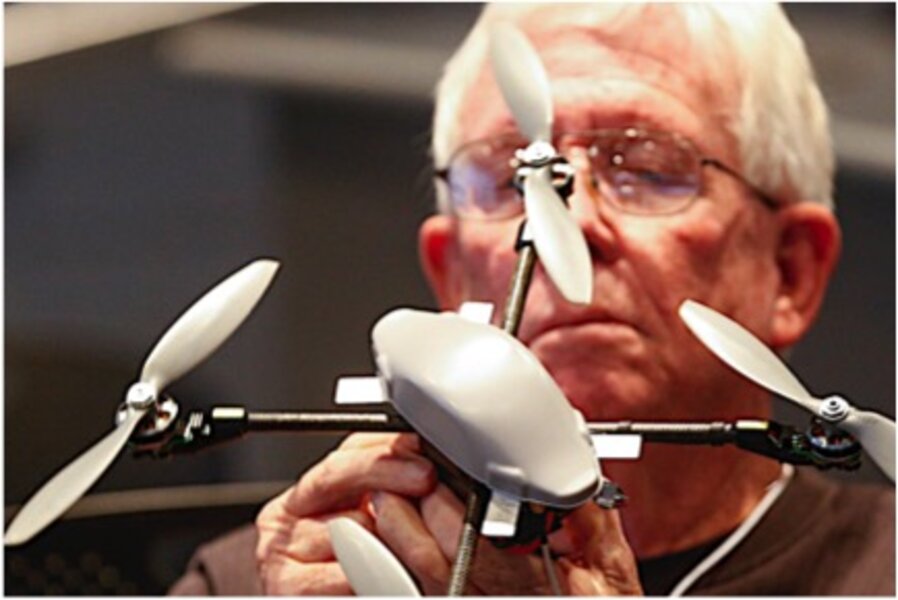Drones out of control: What is Congress doing?
Loading...
Drones are giving more people wings to fly at a lower price than ever before, but regulators worry that there isn't enough air for all of them.
Drones by the hundreds have been violating Federal Aviation Administration (FAA) rules, two senators said Wednesday. Drones are supposed to stay five miles away from airports, far from other aircraft, and within 400 feet of the ground. But the FAA has recorded 891 violations, all sighted by passenger planes between April 2014 and August 2015, USA Today reported.
Sen. Dianne Feinstein (D) of California and Sen. Charles Schumer (D) of New York expressed frustration with the drone disobedience.
"It’s clear that reckless consumer drone use is increasing," said Senator Feinstein, according to USA Today.
The worst violator was Feinstein's home state of California, with 182 drone sightings. California is well aware of the problem. The state passed a law to stop photo-drones from flying over private homes earlier this month, while a bill to criminalize drones that interfere with wildfire-fighting was vetoed by California Gov. Jerry Brown.
On a national level, the Senate Democrats proposed a bill called the Consumer Drone Safety Act, which would require manufacturers to sell safety information with drones and place technological safeguards into the drones themselves, The Hill reported.
"Our bill would advance technologies focused on detecting, identifying and cracking down on dangerous drone use," Senator Schumer said, according to The Hill. "Drone technology has the potential to be truly positive and transformative, and many users operate them safely, but when it comes to protecting our skies and the traveling public, we can leave no stone unturned."
The Academy of Model Aeronautics, an organization that boasts over 180,000 hobbyist drone operators as members, said the FAA report misrepresented the findings, and many of the sightings could have been birds or balloons.
"It’s not just uninformed consumers causing problems; the data includes several reports of authorized or unauthorized public entities and commercial operators flying," the academy pointed out in a news release. "Only a fraction of the records were legitimately reported 'close calls' and 'near misses.' Some didn’t involve drones at all."
In an effort to strike the delicate balance between safety and innovation, the Academy of Model Aeronautics has partnered with the Association for Unmanned Vehicles Systems International (AUVSI), which represents commercial drone operators, to create a website with safety information and guidance on how to use drones without violating FAA rules.
"They're a lot of fun, and they're fairly easy to use, but there are some rules for sharing the air space because there is a limited amount of it available," Tom McMann, a spokesman from AUVSI, told The Christian Science Monitor. "A lot of times, people aren't aware of rules."
Mr. McMann said they are looking forward to a release of comprehensive drone guidelines from the FAA, which are already overdue. Currently, commercial drone use is technically illegal, so commercial drone operators must apply for an exemption in order to fly legally. The FAA is giving out these exemptions at a rate of 50 per week, McMann told The Christian Science Monitor.






